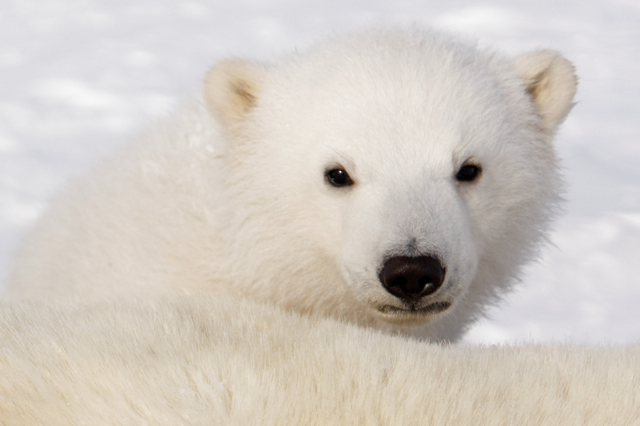
A research team at the University of Alberta has designed a 9,000-SNP Illumina Infinium BeadChip to conduct an updated analysis of the genetic population structure of the threatened Canadian polar bears in the Western Hudson Bay subpopulation. Bears from this specific population have been shrinking for a number of decades - presumably because of reduced access to food caused by loss of sea ice.
"We wanted to explore the possibility that polar bears had adapted genetically to local environments," said PhD student René Malenfant, lead author of a recent paper in the journal Molecular Ecology Resources. "To do this, we needed to use a genomics approach, and it is much easier to genotype SNPs at a large scale than microsatellites."
Malenfant explains that it has been 15 years since the last major analysis of the population, which relied on microsatellite markers that were unable to detect adaptive genetic differentiation across Canada.
"Canadian polar bears are threatened because of anticipated climate-change-induced habitat loss, and that phenotypic data collected by Environment Canada has shown an ongoing decline in body size since the 1960s." Environment Canada maintains extensive pedigree data and phenotypic measurements of polar bear family groups in the Western Hudson Bay area, which he described as "the world's best studied."
The creation of a SNP chip relied on the restriction-site associated DNA sequencing from 38 bears across their circumpolar range, as well as blood and fat transcriptome sequencing of 10 individuals from Western Hudson Bay.
While arrays like these are widely used in human and livestock studies, they were not previously available for polar bears or other non-model species, in part because of the cost of designing them. But the availability of affordable next-generation sequencing enabled the researchers to create their array design.
"SNP arrays such as ours are expensive, but they provide much more reliable genotypes than next-generation sequencing, which we used to discover SNPs to create our array," said Malenfant. "With thousands of polymorphic SNPs in our array, we can achieve much more precise results than possible using previous methods."
Corey Davis, a co-author on the paper and a faculty service officer in Biological Sciences at U of A, explains the research group conceived the project several years ago but sequencing technologies were still out of range, costwise, and methods for genotyping large numbers of SNPs in large numbers of individuals were not common at that time. "Because our goal is to characterize fine-scale genetic structure, particularly around Hudson Bay, the ability to identify genetically differentiated groups from a small sample size is an asset," says Davis.
Ultimately, the researchers hope their work will inform management decisions for Canadian polar bear populations. Malenfant notes that the International Union for Conservation of Nature's Polar Bear Specialist Group recognizes 19 management units of polar bears worldwide, 13 of which are partially or wholly under Canadian jurisdiction. "Under Canadian law, adaptive genetic differentiation can be used to establish "designatable units" for a species, groups that warrant separate protection efforts. If a major genetic cluster of polar bears were found to be very low in adaptive genetic variation, we might want to consider a genetic rescue to ensure that the population remains genetically healthy and able to adapt to future challenges over time."